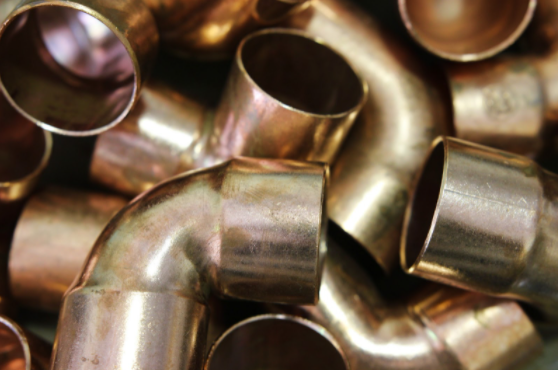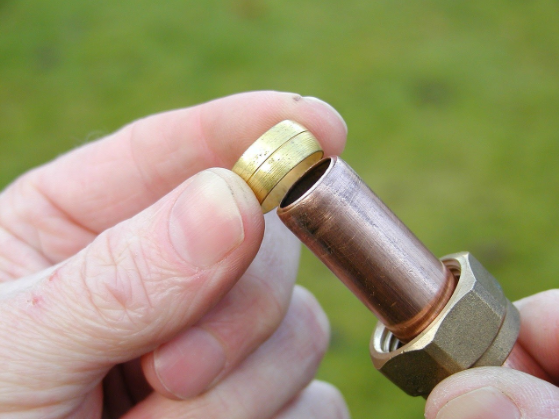Hose fittings are used to attach hoses to various devices. For example, a garden hose may be fitted with a lawn-sprinkler adapter; an air compressor may have several different types of threaded fittings that connect its output or input hoses to corresponding valves, couplings, manifolds, and other components.
Hose fittings are usually made of metal (such as brass), but plastic is sometimes used for lightweight assemblies in which pressure sealing is not required. Hose connections can be made by various means including screw threading (used on automobiles), push-fit systems (used on some fire hoses), slip fit (found in most household indoor water supply systems), compression fitting (various types found in the automotive industry) and quick release coupling.
Threaded fittings use a threaded connection in which a nut and bolt are used to hold the fitting in place on one end, and a mating thread is found on the other end of the hose. The most common type of threaded hose fitting is the garden hose connector, which is a 1/2-inch male National Pipe Tapered (NPT) thread. This type of connector is used to mate with a garden hose female connector, which has a 1/2-inch female NPT thread.
Quick release couplings use an airtight seal that can be quickly released by pressing a button or lever. They are commonly used in the automotive and aviation industries.
Compression fittings use a ferrule (a metal or plastic ring) that is squeezed onto the hose by a compression nut. This type of connection is found in automotive and aviation applications.
Slip fit connections use an O-ring to create an airtight seal between a tube and fitting. This type of connection is common in plumbing applications.
Push-fit connections use a collet (a metal or plastic ring) that grips the outside of the hose, and a plastic sleeve that slides over the fitting to hold it in place. This type of connection is found on some fire hoses and garden hoses.
There are many different types of hose fittings, each with its own unique set of applications. It is important to select the correct fitting for the specific task at hand, in order to ensure a safe and leak-free connection. For more information on specific hose fittings, consult a qualified technician or engineer.
Hose fittings are used to attach hoses to various devices. For example, a garden hose may be fitted with a lawn-sprinkler adapter; an air compressor may have several different types of threaded fittings that connect its output or input hoses to corresponding valves, couplings, manifolds, and other components.
Hose fittings come in many different shapes and sizes, and are made of a variety of materials including brass, plastic and metal. They can be attached by threading (used on automobiles), push-fit systems (used on some fire hoses), slip fit (found in most household indoor water supply systems), compression fitting (various types found in the automotive industry) and quick release coupling.
Finally, different types of hose fittings are used for specific applications. For example, compression fittings are used in automotive and aviation applications, while quick release couplings are commonly found in the automotive industry.



